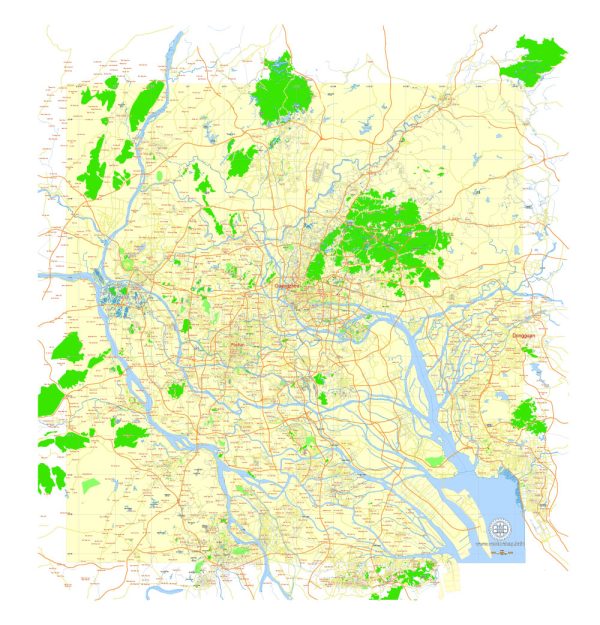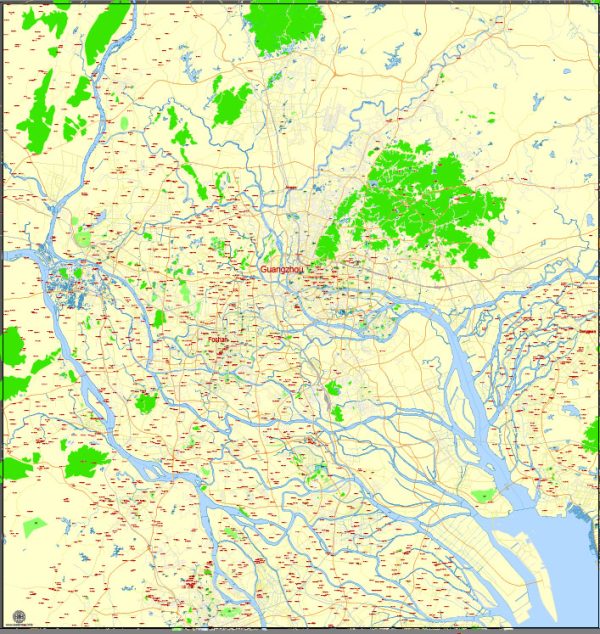Guangzhou, located in the southern part of China, has a rich history of urban development that spans over two millennia. Here is an overview of the key phases in the city’s urban development:
- Ancient History:
- Guangzhou, historically known as Canton, has a history dating back more than 2,200 years. It was a major trading port during the Han Dynasty (206 BCE – 220 CE) and served as a gateway for the Silk Road maritime routes.
- The city’s strategic location along the Pearl River Delta contributed to its early growth as a center for trade and commerce.
- Medieval Period:
- Guangzhou continued to flourish during the Tang (618–907) and Song (960–1279) dynasties, becoming a cosmopolitan city with influences from various cultures.
- The city played a crucial role in international trade, attracting merchants and traders from Arab, Persian, Indian, and Southeast Asian regions.
- Ming and Qing Dynasties:
- During the Ming Dynasty (1368–1644) and Qing Dynasty (1644–1912), Guangzhou further solidified its status as a major trading port.
- The Canton System, implemented by the Qing government, restricted foreign trade to the port of Guangzhou and greatly influenced the city’s economic development.
- Opium Wars and Foreign Influence:
- In the 19th century, Guangzhou became a focal point during the Opium Wars (1839–1842, 1856–1860) between China and Western powers. The signing of the Treaty of Nanjing in 1842 opened additional ports to foreign trade, challenging Guangzhou’s exclusive status.
- Foreign concessions were established along the Pearl River, contributing to the city’s urbanization and introducing Western architectural styles.
- Republic of China Era:
- After the fall of the Qing Dynasty in 1912, Guangzhou played a crucial role in the early years of the Republic of China. It served as the seat of government for Sun Yat-sen, a key figure in the Chinese revolution.
- The city experienced modernization efforts, including the development of infrastructure and education.
- Communist Era:
- After the establishment of the People’s Republic of China in 1949, Guangzhou underwent industrialization and urban expansion as part of the country’s overall development plans.
- The economic reforms initiated by Deng Xiaoping in the late 20th century further accelerated Guangzhou’s growth as a major economic hub.
- Contemporary Development:
- In recent decades, Guangzhou has undergone rapid urbanization and modernization. The city has witnessed the construction of iconic skyscrapers, modern transportation systems, and the development of new urban areas.
- The Pearl River New Town, a central business district, is a testament to Guangzhou’s contemporary urban development with its modern architecture and infrastructure.
Today, Guangzhou stands as a vibrant metropolis, blending its rich historical heritage with modern urban amenities and economic significance. The city continues to be a major center for trade, commerce, and cultural exchange in southern China.



 Author: Kirill Shrayber, Ph.D.
Author: Kirill Shrayber, Ph.D.